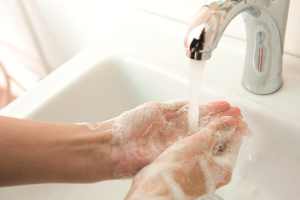Clarifying changes to AS3500.4
Rheem Technical marketing manager David Micallef clears the air surrounding the latest changes to AS/NZS3500.4 which has caused some confusion among the industry.
Centralised warm water systems are a highly cost effective means of providing safe tempered water to showers, baths and basins and have been used extensively for over 20 years in Australia.
The principle document for plumbing compliance is the NCC Vol 3. It calls up AS/NZS 3500.4 as the means of demonstrating compliance with the requirements of the NCC.
The latest changes to AS/NZS3500.4 came into effect on May 1. The principle change to the Standard was the inclusion of requirements for circulating heated water systems (previously totally excluded from the standard). The author was included in the working group committee due to extensive experience working with circulating systems.
As with any standard, terms of reference are required and a scope was determined as to what would be included. The inclusion of circulatory warm water systems was debated, but was agreed that the topic would not meet the practical timing requirements for the Standard changes. As such the scope reads as follows:
Scope
This section sets out minimum requirements for the sizing and installation of forced circulation heated water reticulation installations.
Temperature requirements
The delivery temperature flowing from a water heater, bank of water heaters or a heated water storage vessel shall be not less than 60˚C.
The return water temperature to a water heater, bank of water heaters or heated water storage vessel shall be not less than 55˚C.
NOTES:
Refer to Clause 2.3 for selection of suitable materials.
Generally, a thermostatic mixing valve [TMV] and tempering valve require a minimum of 10˚C of temperature differential to operate correctly. For example, to provide 50˚C at the outlet 60˚C temperature is required at the valve or to provide 45˚C at the outlet 55˚C temperature is required at the valve.
This scope has raised concerns from the industry that centralised warm water systems are henceforth banned. This is not the case.
As can be seen from the note to the scope, the intent is to ensure that a hot water service provides adequate temperature for its intended use in providing sanitary hot water for bathing purposes, hence the reference to TMV’s and tempering valves.
Products such as Rheem Guardian and similar from other manufacturers are neither a water heater nor a heated water storage vessel and so are outside of the scope of the standard.
The clause which is of concern to some is the last sentence which states the return to a water heater shall be not less than 55˚C. As centralised warm water systems return water that is less than 55˚C to the water heater for reheating, this seemingly precludes the use of a centralised warm water system.
Performance solution
The consequence of the change to AS/NZS 3500.4 that came into force on May 1 is that an installation including products such as Rheem Guardian in a circulating warm water system will not be able to cite conformance to AS/NZS 3500.4 as the sole means of demonstrating compliance with the Performance Requirements of Vol. 3 of the NCC.
However, the NCC framework provides alternative means of demonstrating compliance with Performance Requirements of the Code, by using Performance Solutions (or a combination of Deemed-to-Satisfy and Performance Solutions).
In other words, when it comes to the installation of a heated water system, conformance to AS/NZS 3500.4 is deemed to satisfy the requirements of the NCC, but is not a necessary condition.
Standards, by their very nature, cannot keep pace with innovation and industry developments. They are useful in providing an easy path for compliance (Deemed to Satisfy), however, the NCC allows for innovation by the inclusion of performance based solutions.
Rheem has technical representatives in every state and New Zealand who can provide a site specific performance based solution that includes Rheem Guardian warm water.
Generally, the concern raised with warm water systems (both dead leg and circulating) is how to prevent the proliferation of Legionella bacteria in the system.
In the next instalment of Plumbing Connection, we’ll discuss how this is best achieved from a design, operation and maintenance perspective.

